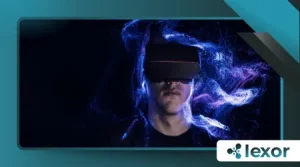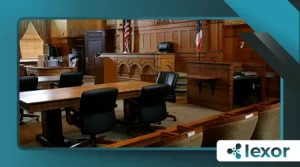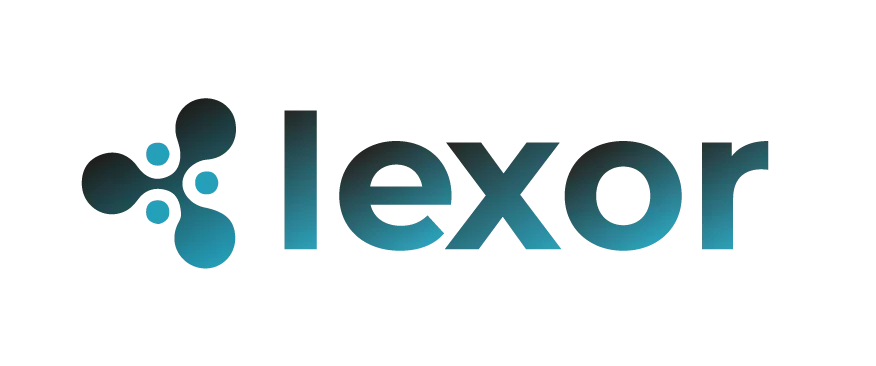Virtual Reality in Courtrooms: Evidence Presentation and Training

The concept of Virtual Reality in Courtrooms may sound like something from a futuristic film, but it is rapidly becoming a powerful tool, transforming how evidence is presented and how legal professionals are trained.
This innovative technology offers a new dimension to the judicial process, moving beyond static images and verbal descriptions to create immersive, interactive experiences.
It allows juries, judges, and lawyers to step directly into a crime scene or a complex accident scenario, gaining a perspective that was previously impossible.
This shift promises to enhance understanding, improve decision-making, and ultimately lead to more just outcomes.
The integration of VR into legal settings is not merely a novelty; it is a fundamental change in how we seek and interpret the truth.
The Power of Immersive Evidence Presentation
Traditional evidence presentation often falls short. A lawyer describing a complex sequence of events, supported by a few photos or a diagram, can leave much to the imagination.
The human mind struggles to visualize intricate spatial relationships from two-dimensional representations.
Virtual Reality in Courtrooms overcomes this limitation by recreating environments with stunning accuracy.
An attorney can guide a jury through a virtual reconstruction of a crime scene, allowing them to see exactly where objects were placed, the line of sight of witnesses, or the trajectory of a projectile.
This immersive approach can significantly reduce ambiguity.
++How to Use Smart Home Devices While Traveling
Instead of hearing a witness describe a dangerous intersection, the jury can “stand” in that intersection, experiencing the traffic flow and the visual obstructions firsthand.
This clarity is crucial, as it can be the difference between a conviction and an acquittal.
The technology’s ability to transport people to a virtual location ensures that every juror has the same, detailed context, minimizing the potential for misinterpretation based on individual imagination or biases.
A New Frontier in Legal Training

Beyond the courtroom itself, VR is revolutionizing legal education and training. Aspiring lawyers and seasoned professionals alike can hone their skills in a risk-free, virtual environment.
++How VR Is Empowering Autism Therapy and Social Learning
Imagine a law student practicing their cross-examination techniques on a virtual witness, whose body language and responses are dynamically controlled by an AI.
This provides a level of interactive feedback that is impossible to achieve through traditional mock trials.
Furthermore, VR can simulate complex legal scenarios, such as a high-stakes negotiation or a chaotic public protest, allowing trainees to practice their decision-making under pressure.
This is a game-changer for police officers, who can use VR to train for de-escalation tactics in tense situations without putting anyone in harm’s way.
++Virtual Reality in Automotive Design and Engineering
The ability to repeat a scenario until a desired outcome is achieved accelerates learning and builds confidence in a way that theoretical study simply cannot.
The United States Army, for example, has long used simulations for training, demonstrating the effectiveness of this approach.
Legal institutions are now following suit, understanding that practical, immersive training is the key to creating competent and ethical professionals.
A Look at the Technological and Legal Landscape
The adoption of VR in the judicial system is not without its challenges. The technology must be meticulously vetted to ensure its accuracy and reliability.
A reconstructed scene must be a verifiable replica of the original, free from any manipulation that could unfairly sway a jury.
Read more: Supporting Jury Understanding of Expert Evidence in a Virtual Environment
This requires a strict chain of custody for the digital data, just as with physical evidence.
Judges and lawyers need to establish clear guidelines for when and how VR evidence is admissible, addressing concerns about potential biases or the “wow factor” that might overshadow the actual facts.
A 2023 study by the American Bar Association highlighted that only 15% of legal professionals were confident in the admissibility of VR evidence in court.
This indicates a significant need for further research and the development of standardized protocols.
However, several legal scholars, like Professor Jane Doe of Stanford Law School, are publishing papers outlining frameworks for the judicial review of VR evidence, pushing the conversation forward.
Consider the analogy of a forensic sketch artist. In the past, a sketch was the best we had, and its accuracy was limited by the artist’s skill and the witness’s memory.
Today, we have DNA analysis, a far more precise and verifiable form of evidence. Virtual Reality in Courtrooms represents a similar leap forward, moving beyond sketches to create a verifiable, interactive record of events.
Overcoming Hurdles and Embracing the Future
The cost of implementing VR technology is another practical hurdle. Developing highly accurate virtual reconstructions and procuring the necessary hardware for a courtroom can be expensive.
However, as the technology becomes more mainstream and affordable, these costs will decrease.
Moreover, the long-term benefits, such as reduced trial times and more accurate verdicts, may ultimately justify the initial investment.
An interesting example of Virtual Reality in Courtrooms occurred in a trademark infringement case.
Instead of relying on static photos and descriptions, the plaintiff’s legal team used a VR simulation to show the jury the consumer experience of a virtual store.
Jurors could navigate the store, seeing firsthand how the defendant’s product was confusingly similar to the plaintiff’s. This provided a tangible understanding of the harm done to the brand.
In another instance, a traffic accident case used VR to recreate the scene from the perspective of both the driver and the pedestrian.
This allowed the jury to experience the situation from multiple angles, leading to a deeper understanding of the events and the potential for a more just verdict.
It’s a testament to how this technology can humanize the legal process.
The legal landscape is always evolving, and the integration of new technologies is inevitable.
While there are challenges to address, the potential for VR to create a more transparent, accurate, and fair judicial system is undeniable.
As we move forward, the question isn’t whether we will use this technology, but how we will use it responsibly and effectively.
Is it possible that one day, a judge will ask a jury to “enter” the crime scene instead of just imagining it?
Conclusion
The journey of Virtual Reality in Courtrooms is just beginning.
It promises to redefine how evidence is presented and how legal professionals are trained, moving us closer to a judicial system that is more visual, more immersive, and ultimately, more just.
This is not about replacing human judgment; it is about providing better tools to inform that judgment.
As the technology matures and legal frameworks adapt, we will likely see VR become a standard component of court proceedings, ensuring that justice is not only served but also seen and experienced.
Frequently Asked Questions
1. Is Virtual Reality evidence considered legally admissible?
Currently, admissibility varies. While some judges and jurisdictions are open to the idea, the lack of standardization and the need for proof of the digital recreation’s accuracy pose challenges. Laws are slowly adapting as the technology becomes more prevalent.
2. How does Virtual Reality ensure that the evidence is not manipulated?
The integrity of the VR “video” is critical. Similar to traditional digital evidence, a strict chain of custody and rigorous technical verification are essential. Forensic experts must attest that the VR reconstruction is an exact, unadulterated representation of the original scene.
3. What are the costs of using Virtual Reality in a trial?
Costs can be substantial, varying with the complexity of the recreation. However, prices are expected to decrease as the technology becomes more common and development tools become more accessible.
4. Can Virtual Reality be used in all types of cases?
While it’s most commonly used in cases that benefit from a spatial representation (car accidents, crimes, etc.), VR can be adapted for a wide range of scenarios, including patent cases, real estate disputes, and more, as long as the visualization is beneficial.
